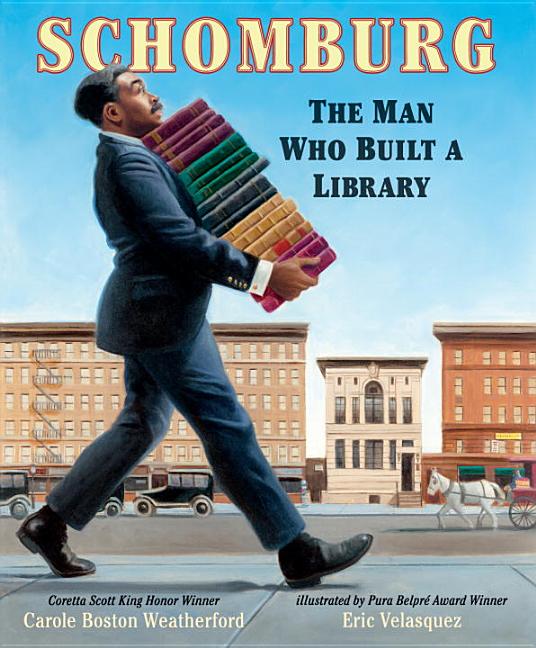Book Descriptions
for Schomburg by Carole Boston Weatherford and Eric Velasquez
From Cooperative Children's Book Center (CCBC)
Arturo Schomburg’s keen interest in documenting the many and varied contributions of people of African descent to arts, letters, and science led to decades of meticulous, patient work as he searched out and collected books, art, and other artifacts. At first glance, this work is a biography of Puerto Rican-born Schomburg, who worked as a bank clerk in New York City by day, in poems. But it is also history and inspiration and determination. Schomburg believed Black contributions existed and mattered and were worthy of preservation. He was a detective, ferreting out hidden history, as well as a collector and preservationist. Among his many accomplishments was documenting buried histories of African heritage in famous people such as Beethoven and Alexandre Dumas. “Arturo saw that the historical record was colorblind / only when that best served greedy motives. / So when genius was black, skin color was left out. / But Schomburg chased the truth and turned up icons / whose African heritage had been whitewashed.” Schomburg died in 1938. His legacy lives on in his work and in the New York Public Library research center that houses his collections and bears his name. (Ages 9-13)
CCBC Choices 2018. © Cooperative Children's Book Center, Univ. of Wisconsin - Madison, 2018. Used with permission.
From the Publisher
In luminous paintings and arresting poems, two of children’s literature’s top African-American scholars track Arturo Schomburg’s quest to correct history.
Where is our historian to give us our side? Arturo asked.
Amid the scholars, poets, authors, and artists of the Harlem Renaissance stood an Afro–Puerto Rican named Arturo Schomburg. This law clerk’s life’s passion was to collect books, letters, music, and art from Africa and the African diaspora and bring to light the achievements of people of African descent through the ages. When Schomburg’s collection became so big it began to overflow his house (and his wife threatened to mutiny), he turned to the New York Public Library, where he created and curated a collection that was the cornerstone of a new Negro Division. A century later, his groundbreaking collection, known as the Schomburg Center for Research in Black Culture, has become a beacon to scholars all over the world.
Where is our historian to give us our side? Arturo asked.
Amid the scholars, poets, authors, and artists of the Harlem Renaissance stood an Afro–Puerto Rican named Arturo Schomburg. This law clerk’s life’s passion was to collect books, letters, music, and art from Africa and the African diaspora and bring to light the achievements of people of African descent through the ages. When Schomburg’s collection became so big it began to overflow his house (and his wife threatened to mutiny), he turned to the New York Public Library, where he created and curated a collection that was the cornerstone of a new Negro Division. A century later, his groundbreaking collection, known as the Schomburg Center for Research in Black Culture, has become a beacon to scholars all over the world.
Publisher description retrieved from Google Books.


